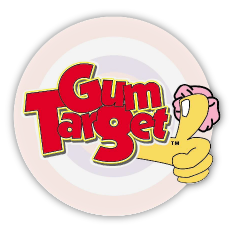The Sticky Situation Begins
As pedestrians walk along, they often unknowingly step on these discarded pieces of gum. The gum gets further pressed into the pavement, making it even more challenging to remove. Over time, more individuals step on the gum, unwittingly contributing to its spread across a wider area. This spreads the problem from a single point to a broader spectrum, affecting the cleanliness and aesthetic appeal of public spaces.
Translucent pieces of gum turn into unsightly dark spots that blemish sidewalks, streets, and other public areas. This transformation from a slightly bothersome piece of litter into an environmental stain highlights the resilience of chewing gum when faced with natural elements. Unlike other forms of litter that might disintegrate or become less visible over time, discarded gum maintains its presence, stubbornly clinging to surfaces.
Specialized tools and methods are required to remove gum once it has firmly adhered to a surface. These removal processes consume valuable time and resources, diverting them from other necessary maintenance tasks. The difficulty in eradicating all traces of discarded gum underscores the importance of addressing this issue at its starting point—encouraging proper disposal practices among individuals who chew gum.
The Environmental Impact
As gum breaks down under environmental stresses such as sunlight and physical abrasion, it does not disappear. It fragments into smaller pieces, eventually becoming microplastics. These tiny particles are difficult to manage and remove from the environment. They find their way into waterways, oceans, and soil, where they pose significant risks to aquatic life and terrestrial organisms. Microplastics are ingested by wildlife, leading to internal blockages, reduced nutritional intake, and, in severe cases, death.
The widespread presence of discarded gum in natural habitats can lead to direct ingestion by animals, mistaking it for food. Such incidents can have fatal outcomes for wildlife, as the gum can cause blockages in the digestive tracts of animals. This situation have ripple effects on local ecosystems and biodiversity.
The process of removing gum from public spaces often involves methods that can be harmful to the environment. Techniques such as power washing or the use of chemical solvents can result in the introduction of pollutants into water systems and the atmosphere. The physical removal of gum from surfaces can contribute to the degradation of infrastructure, leading to a need for repairs and replacements that utilize resources and energy.
The Clean-Up Conundrum
One common method employed is the use of high-pressure steam jets, which work by heating the gum to a point where it becomes pliable enough to be dislodged from the surface. While effective, this method requires significant energy consumption and specialized equipment, leading to higher operational costs. The process of steam cleaning can be slow, requiring multiple passes to fully remove the gum, further increasing labor costs.
Another technique involves freezing the gum with chemical sprays, making it brittle and easier to chip away from surfaces. The chemicals used in these sprays can be harmful to the environment, introducing pollutants into the air and water. The repetitive application of these chemicals can accelerate the wear and tear on public infrastructure, leading to additional maintenance needs.
Given the widespread prevalence of gum chewing and the ease with which it is improperly discarded, the accumulation of gum on public surfaces is a continuous issue. This means that gum removal is a recurring expense, demanding ongoing allocation of resources.
The efforts to remove gum from public spaces highlight a broader issue within waste management and urban maintenance. The need for specialized equipment and techniques underscores the complexity of keeping urban environments clean and the importance of innovation in developing more efficient and environmentally friendly cleaning solutions.
An Ounce of Prevention
 Informing the public about the long-term environmental effects and the financial burden of cleaning up discarded gum can inspire a change in behavior. By understanding that chewed gum is rather a form of pollutant that contributes to the degradation of public spaces and natural environments, individuals are more likely to think twice before disposing of it carelessly.
Informing the public about the long-term environmental effects and the financial burden of cleaning up discarded gum can inspire a change in behavior. By understanding that chewed gum is rather a form of pollutant that contributes to the degradation of public spaces and natural environments, individuals are more likely to think twice before disposing of it carelessly.
Urban planners and local governments can address this by ensuring that trash bins and specialized gum disposal units are plentiful and visible in public areas, such as parks, streets, and outside commercial establishments. Some cities have introduced creative solutions, such as boards or sheets specifically designed for sticking used gum, whic deter gum littering through a novel approach.
Manufacturers of chewing gum have a role to play in mitigating the problem of gum litter. By including messages on packaging that encourage customers to dispose of the product responsibly, companies can contribute to the broader effort of preventing gum litter. Packaging innovations that provide a means for the hygienic storage of used gum until it can be properly disposed of can significantly reduce instances of gum being dropped on the streets.
One of the approaches to preventing the negative impact of discarded gum is the development and promotion of biodegradable chewing gum. Unlike traditional gum, which is made from synthetic polymers, biodegradable alternatives decompose naturally, thereby mitigating long-term environmental damage. Supporting and choosing these environmentally friendly products can be a significant step toward addressing the problem of gum litter.
Community involvement in maintaining clean public spaces can catalyze individual and collective action against gum litter. Organizing community clean-up days, during which volunteers gather to remove gum and other litter from local areas, raises awareness about the issue among participants and onlookers alike.
The lifecycle of a chewed piece of gum is a complex issue that touches on environmental, economic, and social themes. While it may seem like a small act to toss gum onto the sidewalk, the consequences spread far and wide. By understanding the journey of discarded gum and its impact, we can make more responsible choices, contributing to cleaner, greener, and more beautiful communities. Through awareness, innovation, and collective action, we can stick it to gum litter once and for all.



